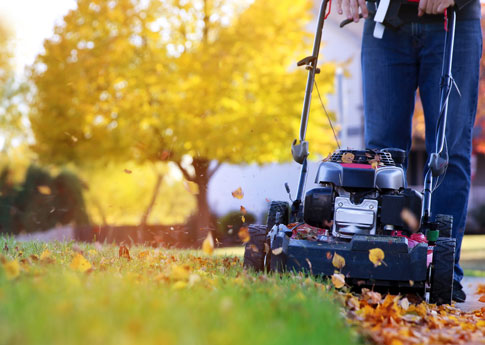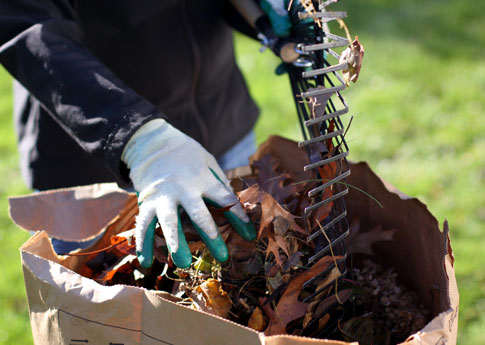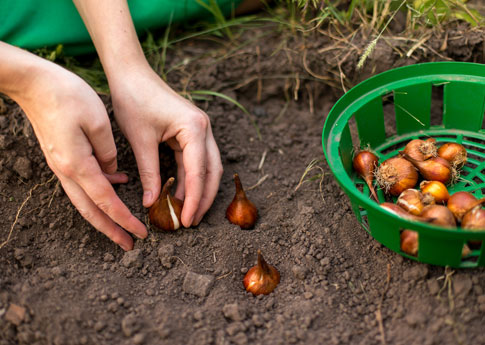Yards, gardens, and flower beds: How to prep for winter

Preparing your yard for the winter is a must if you want your shrubs, perennials, lawn, and garden to be in good shape come spring. But what do you have to do, and when? Read on for answers.
What do you do with shrubs and conifers in the fall?
First of all, it’s always a good idea to give them a good pre-winter pruning, mainly to remove dead branches that could fall and damage your home or your property. You can always bring in a company you trust if you need help. Next, put down a layer of mulch at the base of any trees and shrubs exposed to the wind, leaving a clear space around the trunk or stem. In addition to retaining snow, mulch protects plants from cold and sudden temperature changes. You’ll also want to give your leafy and coniferous shrubs a generous watering before the first freeze to prevent the needles from browning.

Do your plants need to be covered for winter?
Winter protection is helpful mainly for plants that are fragile (e.g., rose bushes or young shrubs), exposed to wind, or likely to be crushed by snow. Wait until all the leaves have fallen, around mid-November to early December, before tying up your plants or adding Arbotex-style covers. If you do it too early, your plants could overheat.
Should perennials be cut back in the fall or is it better to wait until spring?
Fall or spring are both fine, but if you cut them back in the fall, they’ll grow back more vigorously in the spring. If you cut your perennials in the fall, leave 3 to 4 inches from the ground, then replace synthetic fertilizers with compost that will nourish not only your plants, but also your soil. It’s a good idea to wait until spring to cut back grasses that birds feed on in winter. It is also best to wait until spring for new or fragile plants.
Do you really have to pick up dead leaves from the yard?
Yes. Too many dead leaves can weaken your lawn over the winter, unless you mulch the leaves and spread them out in a thin layer. However, you can use dead leaves to protect plants in your flower beds.

Grass in winter: Short or long?
The ideal height for the last mowing of the season is about 5cm (2in.) from the ground. Mow the lawn as soon as the ground freezes at night, then pick up the grass clippings to avoid suffocating your lawn. Aerating (making small holes in) your lawn will also help it grow back nice and healthy in spring.
Is fall a good time to seed your lawn?
Absolutely! September is a great time to seed any dead or sparse areas of your lawn. First, dig up the problem area, then add a mixture of soil, compost, and seed.
Is fall a good time to use pesticides?
Pesticides should be used as sparingly as possible, especially given the health risks they involve. In the event of a major infestation, it’s better to call in trained specialists or use products that aren’t harmful to your health or the environment. Keep in mind, many insects are useful and it’s better to drive them off than to kill them.
Should you till your garden in the fall or spring?
There are actually two schools of thought: some recommend tilling because it aerates the soil, while others advise against it, mainly to avoid harming the organisms living in the soil (i.e., let nature take its course). Ultimately, it’s up to you, but remember that if you have compacted (or clay-heavy) soil, it will benefit from a good turning in the fall. Whatever you decide, adding some compost is always recommended.
When do you plant bulbs?
Before the first frost. You want to plant them fairly deep (at a depth of 3 times the bulb’s diameter), pointy side facing up, and leave a good amount of space between each (3 times the width of the bulb). Follow the directions on the package. Spring-flowering bulbs (tulips, hyacinths, daffodils, etc.) will add a festive pop of colour once spring arrives.

Can some annuals be overwintered?
Absolutely. Some plants can be brought indoors for the winter. You can also save some cuttings to start new plants or collect seeds that you can sow in the spring.
There are other things you can do around your home to prepare for winter, such as cleaning your gutters. Check out our Seasonal Home Maintenance Guide to learn more. And if you’ve had any uninvited pests in your home this summer, make sure they won’t be able to find a way back in for winter. Have home maintenance questions? CAA-Quebec’s Residential Advisory Services are available to members free of charge!
Thanks to Éco-Verdure for their help in preparing this article.

Benefit from personalized advice
Do you have questions about your home, need specific information, or are you looking for referrals to find an Approved Supplier?